RECOIL OFFGRID Preparation Engineered Unrest: The DIY Occupation Guide
In This Article
To say we live in tumultuous times is an understatement. War rages across eastern Europe, the Middle East, and Africa. Several major economies teeter on the brink of collapse. And here in the U.S., division between Americans is running rampant. In recent months, over 50 college campuses and dozens of cities across the U.S. have seen pro-Palestinian protests, many of which have escalated to violence as participants clashed with counter-protestors and law enforcement. The sudden spread of these protests has led politicians and pundits to claim that third-party agitators are co-opting the movement and using it to deliberately fan the flames of unrest in an election year. Lending validity to these concerns, there is a guide circulating the web which instructs these groups how to further exploit these feelings: the Do-It-Yourself Occupation Guide.
(Lead photo via Flickr – C64-92)
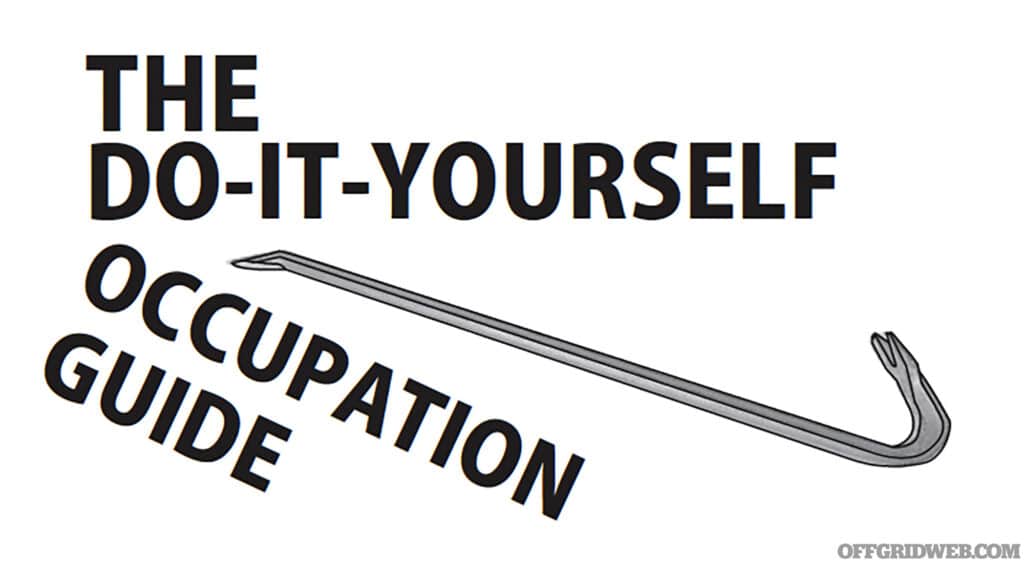
Above: On the cover of the DIY Occupation Guide, imagery of a crowbar indicates the underlying intent of the Guide.
This guide suggests tactics, techniques, and procedures for anyone who is upset with their quality of life and who may be looking for a cause to join. If that scenario sounds familiar, it’s because almost every attempt at a social movement purports to stem from one’s discontent at the way things are. Although these efforts often originate from real and serious issues and are perpetrated in the name of “justice” or “equality,” certain actors with a darker and more violent agenda creep in to take advantage of the situation. As Saul Alinsky, famous activist and author of “Rules for Radicals” once wrote, “An organizer must stir up dissatisfaction and discontent; provide a channel into which the people can angrily pour their frustrations.” The DIY Occupation Guide is a testament to this fact, and it brings to light much deeper problems our society faces.

Above: Protests become a convenient way for organizations to get media coverage. (Photo via Flickr – David Shankbone)

It's not a long read, and the order of the pages is a bit odd, but this guide briefly covers several topics — organizing the illegal occupation of a building, how to defend an illegally occupied space, and what to do when it comes to an end. The author assumes that if you are reading the DIY Occupation Guide, you are upset with society and can think of no other constructive way to solve problems besides becoming a professional agitator. Techniques discussed in the Guide are all about exploiting vulnerabilities, gaining access to buildings, targeting weaknesses in police tactics, and more importantly, manipulating the vulnerable minds of other people who perceive themselves as suffering in order to expand the movement.
The guide concludes with a clear statement of purpose:
“The occupation must spread to survive. What would happen if we could take over the whole city, living without the imposition of the state or capitalism?”
Knowing that the DIY Occupation Guide exists, let’s take a closer look at what it recommends as a course of action, and how you can make sure that these tactics aren’t used against you.
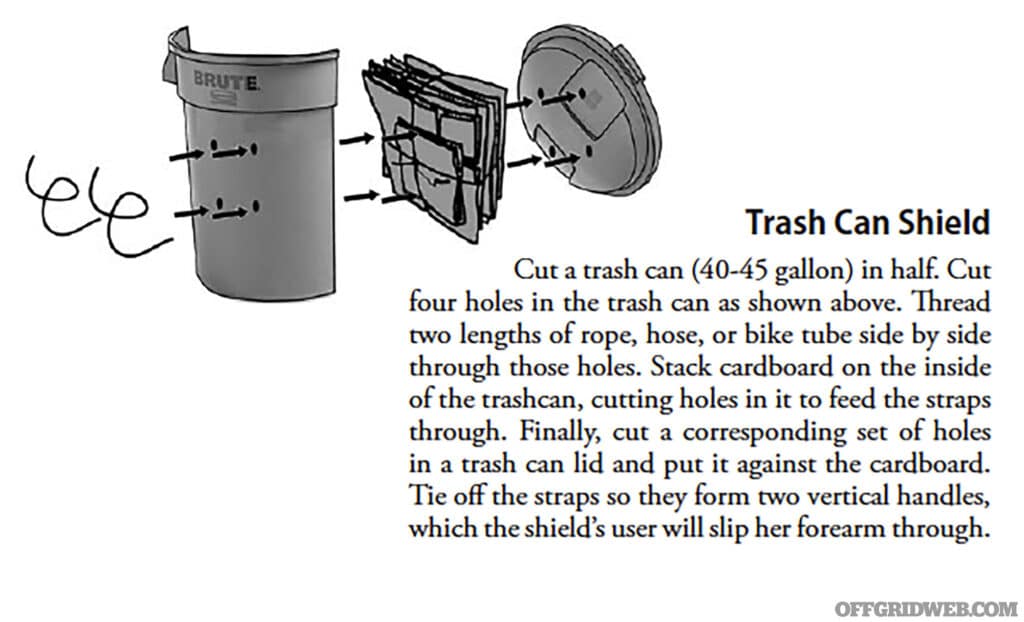
Above: Commonly seen in media coverage of protests, readers of the Guide are given instruction on how to build makeshift shields out of commonly found public items.
Originally birthed in the wake of the 2011 Occupy Wall Street movements, the Guide is a comprehensive playbook for organizing sit-ins and occupations. It covers a range of tactics from simple sit-downs to elaborate takeovers of abandoned buildings, specifically citing lessons learned from J28 Occupy Oakland, where organized anarchists targeted the Henry J. Kaiser Convention Center as the building they would take over. The guide has since been updated for 2024 to reflect lessons from past movements, such as Seattle’s Capitol Hill Autonomous Zone (CHAZ), and can serve as a tool for both activists and those looking to safeguard themselves from said activists.

Above: The Guide includes a recommended reading list to help give illegal activities a boost. According the Handbook of Terrorist Prevention and Preparedness, this type of thing falls right in line with the way terrorist organizations groom potential recruits.
It starts off by appealing to the reader’s need to feel understood. Has it ever crossed your mind that planet Earth was a confusing, crazy, and scary place to live in from time to time? This is a universal symptom of the human condition as we struggle to make our way in the world. Unfortunately, this guide takes advantage of those who haven’t found healthy ways to cope with this chaos by encouraging organized civil unrest, trespassing, and vandalism as an outlet for existential dread. It explains that its purpose is not to address any single issue, but rather to help readers reshape society on a larger scale:
“We can no longer simply protest to demonstrate our rage; decades of activism have come to the point of an impasse. To fight for single issues without addressing the state and capitalism in its entirety will not be able to make the transformations we wish to see possible. Politics turns our lived experiences into useless abstractions and uses those abstractions to fuel meaningless ideological battles. It is time to bow out of the theater of politics.”
Ironically, it attempts to defy traditional societal structures by explaining how to organize and build a new society based loosely around common corporate or military structures.

Above: Protests, regardless of the cause, are a way for people to experience a social bond and unite behind a singular purpose. Because of this, they are often used by behind-the-scenes individuals to foment discord among a population. (Photo via Flickr – Alisdare Hickson)
Organization starts by establishing a group of likeminded individuals and separating them into committees:
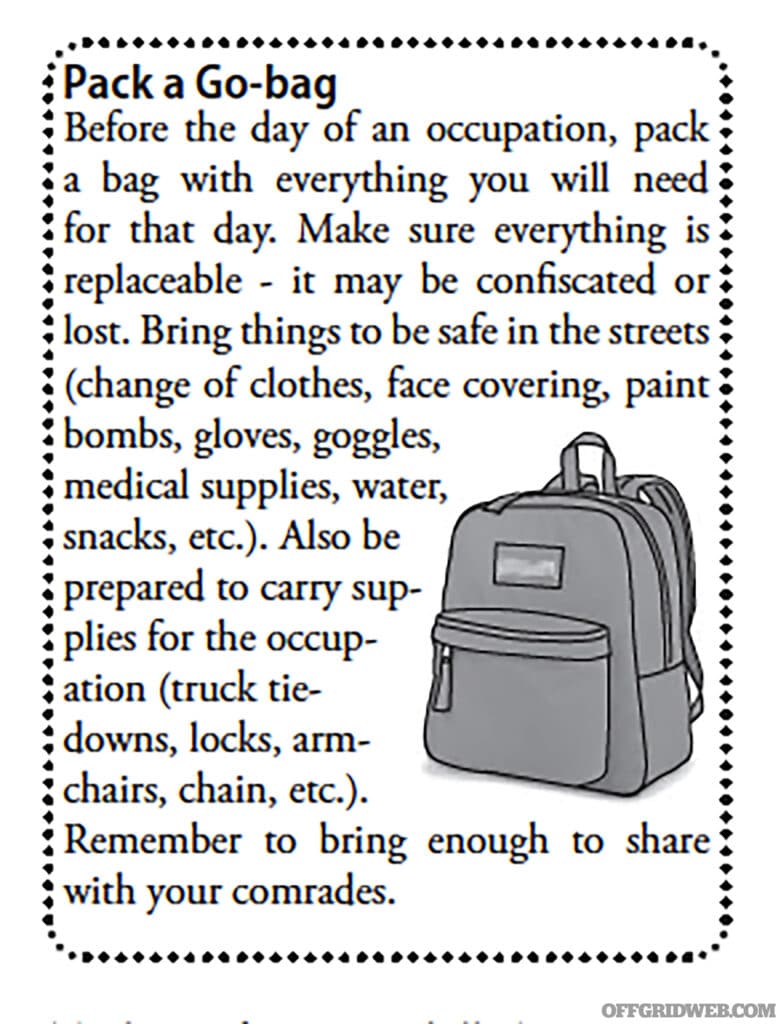
Above: Within the guide are numerous tips, like this one instructing participants to bring their own protest themed go-bag.
The DIY guide then turns from event management to guerilla military tactics by outlining how to seize a piece of property illegally and maintain it.
If it seems odd to you that a publication would encourage disruption of a system that works when everyone gets along by developing something that mirrors a terrorist insurgency, you’re not alone. Terrorist attacks are planned and orchestrated as communication tools to spread fear among a population and convey a message through violence. By following a typical terrorist recruitment cycle — attack, seek media coverage, create propaganda, recruit new members, repeat — the Guide invariably exploits human nature by attempting to perpetuate this cycle.

Above: Protests are the perfect opportunity for nefarious individuals and organizations to exploit gatherings for their own agendas, spreading misinformation and potentially inciting violence at an event that may have started out as a legitimate nonviolent protest. (Photo via Flickr – Bruce Emmerling)
Let's make one thing clear — “the right of the people peaceably to assemble, and to petition the Government for a redress of grievances” is a form of free speech protected by the First Amendment. The Founding Fathers of our nation acknowledged the importance of this right for every American. However, it's also important to recognize that these legitimate protests are often deliberately hijacked by outsiders who wish to polarize participants and push them towards more extreme beliefs and actions, up to and including terrorism or mass murder.
According to “Anarchist/Left-Wing Violent Extremism in America: Trends in Radicalization, Recruitment, and Mobilization” a 2021 paper by the National Counterterrorism Innovation, Technology, and Education Center (NCITE):
“Today, in the United States, reciprocal radicalization at the micro-level between left-wing and right-wing extremists is apparent in street violence during protests between right-wing [Anti-Government and Anti-Authority Violent Extremist] AGAAVE and [Racially and Ethnically Motivated Violent Extremist] RMVE groups on one side and [Anarchist Violent Extremists] AVE on the other.”
Within the 16-page document, several points are made that suggest the author fancies themselves some sort of social psychology tactical guru. After paraphrasing Sun Tzu’s “know thy enemy,” the Guide highlights the obvious by recommending fellow occupiers exploit weaknesses in police formations, to stay alert for changing tactics used by authorities, and to make use of important terrain features. It also recommends utilizing the “Black Bloc” technique, which involves concealing your identity with black clothing and a face mask, a tactic made popular in the German anti-police riots of the 1980s and used extensively by modern anti-fascist, anarchist, and anarcho-communist groups.
Additionally, the DIY Occupation Guide recommends setting up alternative and emergency means of communication, packing a go-bag, and recruiting tradespeople with specialty knowledge to bolster the effectiveness of the occupation. In other words, within its pages are common self-reliance techniques with the goal of establishing a long-term occupation free of counter-disruption from authorities.
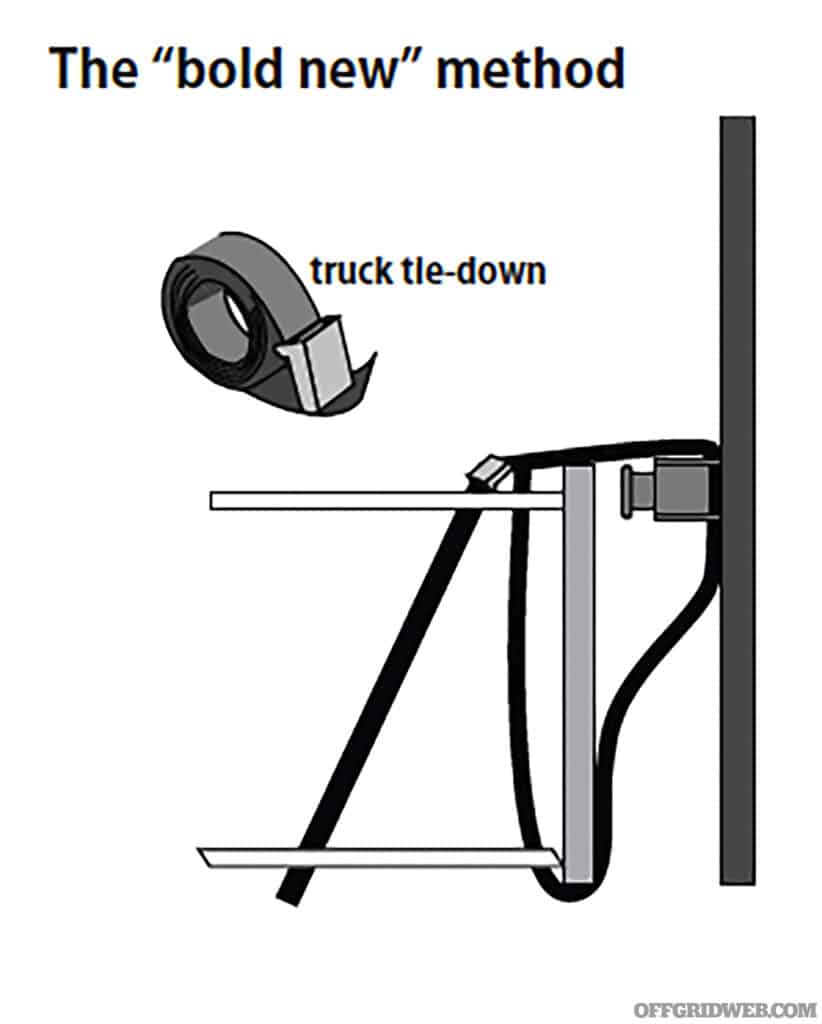
Above: Within the DIY Occupation Guide are numerous instructions like this one, showing how to barricade a door.
So, as a regular individual or small business owner, what can you do to stay safe? In the game of chess that is urban occupation, knowledge is your most powerful piece. Staying informed about the strategies being leveraged against you may help ensure that you're always a move ahead. Recognizing the early signs of an occupation can help community members rally together, alert local authorities, and prevent potential disruptions. Thankfully, despite the thought and planning that seems to be going into these movements, they can be easily discouraged before an occupation takes root.

Above: Think your building is safe because it has a deadbolt lock? Think again! The Guide explains how easy it is to defeat these types of locks with common tools.
Think of your community as a castle. The walls are only as strong as their weakest point. Upgrading physical security measures — stronger locks, better lighting, surveillance cameras — can fortify your defenses. But beyond the physical, there's also the communal bond. Organizing neighborhood watches or community patrols can act like the sentries on your walls, keeping an eye out for unusual activities and ensuring swift collective responses. For business owners, discuss this topic with nearby tenants and consider ways you can help each other.
The heart of countering occupation tactics lies in strengthening community ties. When people know and trust each other, they cooperate better and act more decisively in times of crisis. Initiatives like community centers, regular meetings, and social events can knit neighbors closer together, creating a fabric tough enough to withstand external pressures. Even engaging in friendly, casual discussion as you pass a fellow neighbor is a move that can have long lasting positive effects. Moreover, these connections turn neighbors into allies, making it difficult for external groups to disrupt the harmony.
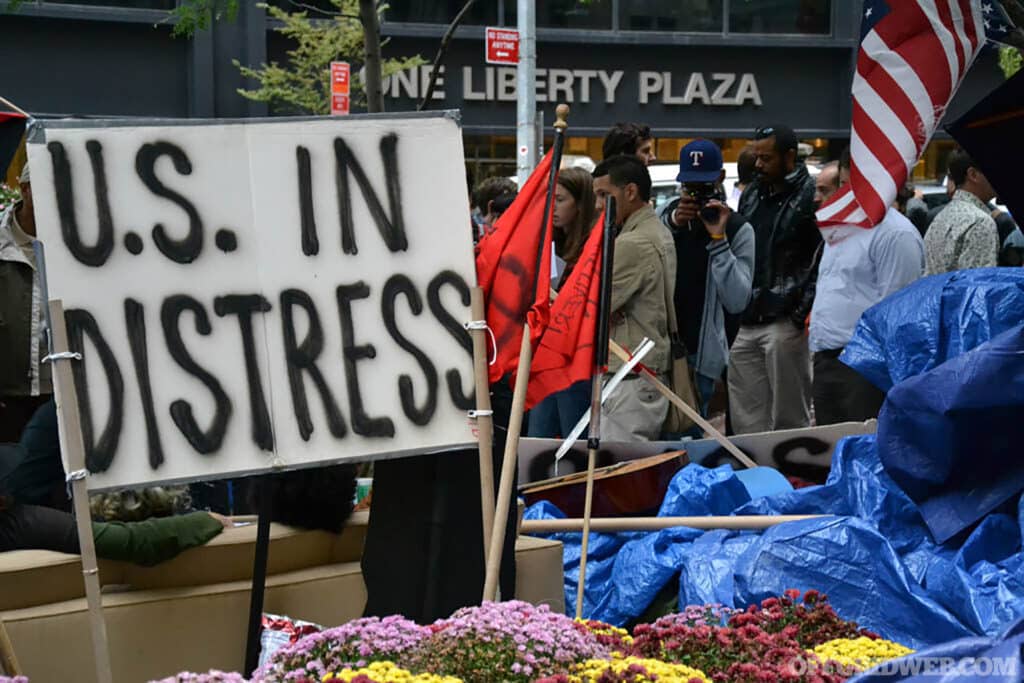
Above: The right to protest peacefully is protected by the First Amendment of the U.S. Constitution. However, with the right prodding from outside sources, these protests can quickly turn from calm to chaos. (Photo via Flickr – Harrie van Veen)
Tearing down flags, defacing buildings, demolishing statues, and disrupting traffic do little to affect the decisions of policy makers thousands of miles away. If anything, it makes the situation worse, as legislators find ways to harness the power of civil unrest into fulfilling some pre-ordained agenda that has nothing to do with the original movement. By doing some preliminary research into who is funding a cause, the desired outcome becomes a little less murky. Most of the violent and destructive protestors we see in the news would not participate if they weren’t being incentivized in some way. We all need to put food on the table somehow, and unfortunately, being paid by an outside organization to sow the seeds of civil unrest is a more convenient way to provide than finding and keeping more wholesome work.
If we are being completely honest with ourselves, especially after reading something like the DIY Occupation Guide, then a sad reality becomes apparent: these incidents are a byproduct of our society’s tendency to hate one another rather than to work together. Participants of civil unrest can be generalized into two categories, those who are looking for a sense of purpose to fill a void in their lives, and those who are either paid or ideologically motivated to exploit them. As we have become increasingly disengaged with our neighbors, we have been slowly losing a support network that we once relied on to help navigate through life’s turbulent times.
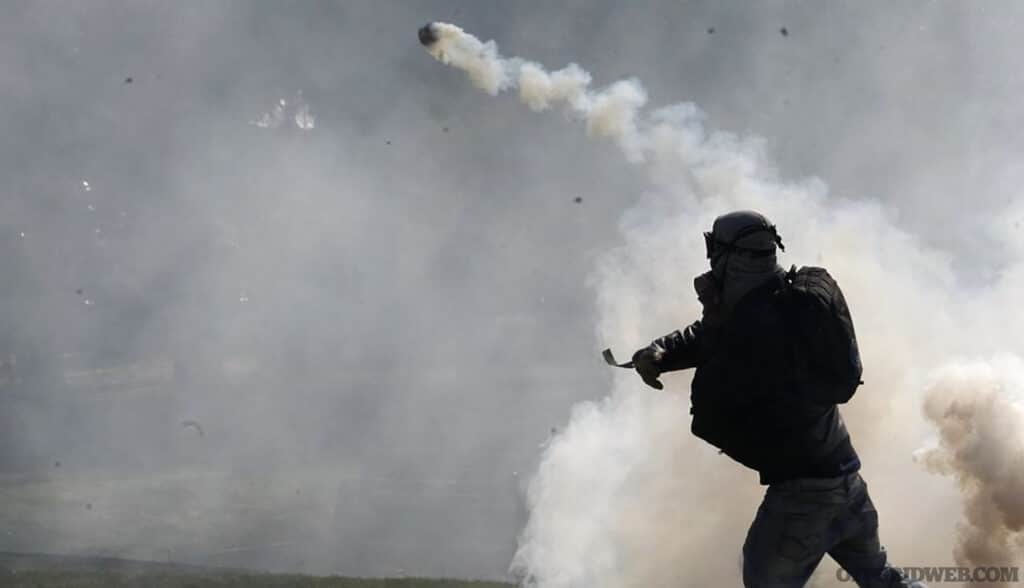
Above: A protestor, making use of the Black Bloc tactic, throws a canister of tear gas back towards a police line. (Photo via Flickr – C64-92)
In a final twist of irony, the authors of the Guide acknowledge the importance of this fact in their sidebar titled “Notes on Us and Them.” It reads:
“We must be careful with ‘us versus them' logic, which oftentimes lapses into the logic of demanding something from ‘them' (those in power). While there are still social and class enemies, we must remember that our power to accomplish whatever project depends ultimately on an ‘us' and not a ‘them.'”
Instead of dumping gasoline on the flames of discontent, perhaps we can glean some insights from this guide that will help direct us towards a future where people are drawn towards a more constructive purpose.
Subscribe to Recoil Offgrid's free newsletter for more content like this.
Editor's Note: This article has been modified from its original print version for the web.
 STAY SAFE: Download a Free copy of the OFFGRID Outbreak Issue
STAY SAFE: Download a Free copy of the OFFGRID Outbreak Issue
No Comments